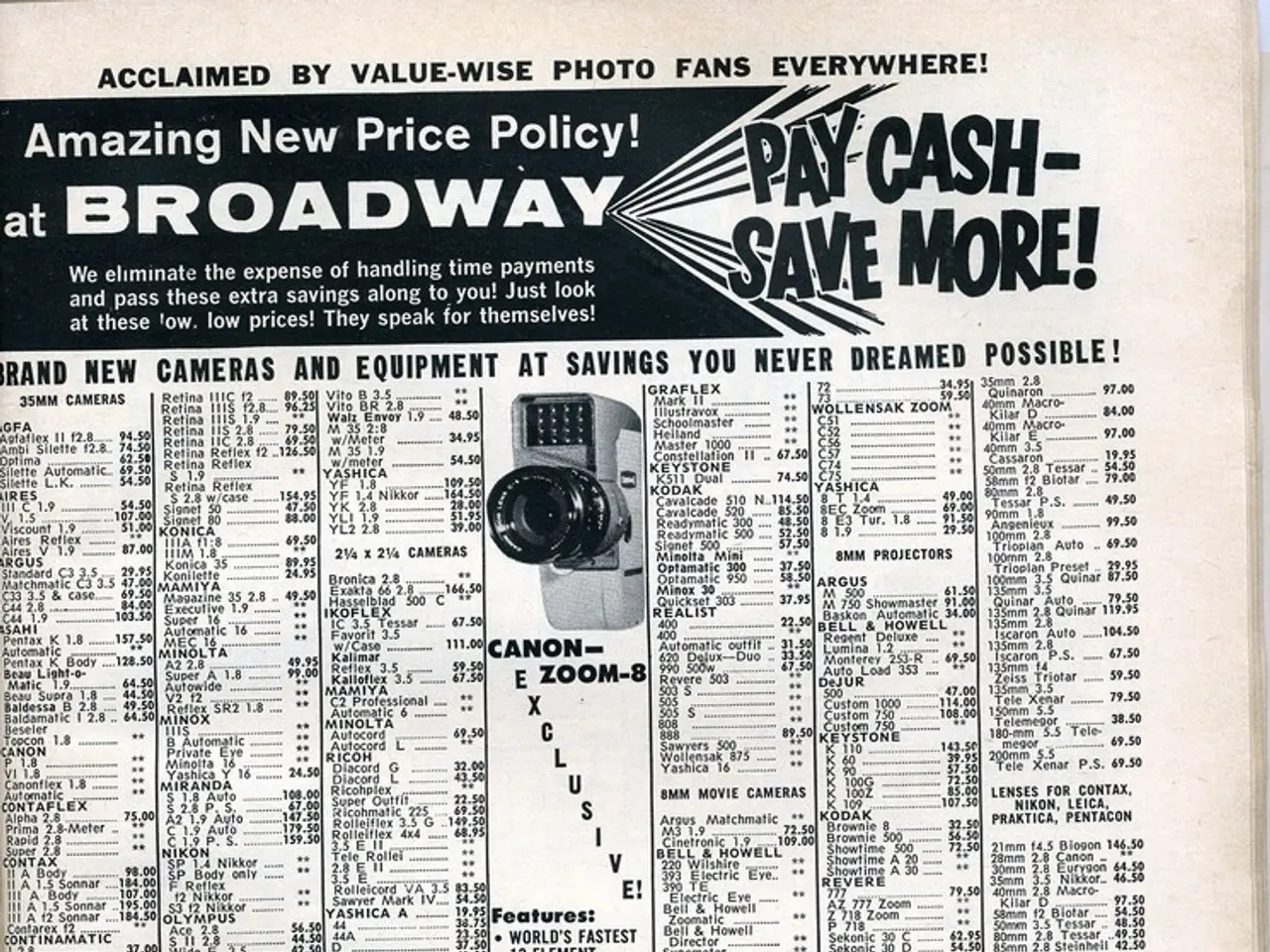Marketing Advancement: Categories, Influential Elements
In the realm of marketing, promotion plays a crucial role in the success of a marketing program. This aspect is divided into two categories: above the line promotion, where companies pay for promotional space without direct control over the target audience, and below the line promotion, where companies have control over their promotions.
When a company adopts an extension strategy, promotion efforts may still be vigorous to revive a product, especially during the growth stage. At this point, the promotional strategy is geared towards stimulating selective demand and diverting customers from competitors.
Sales promotion strategies are a key part of marketing, and they include temporary cost reduction, coupons, loyalty programs, trade-in and trade-up plans, joint promotions, loss leader strategy, contests, free samples, gifts, bundling, referral marketing, and conversational marketing. These strategies are primarily short-term incentives designed to stimulate immediate sales or customer activity, while also building longer-term brand loyalty in some cases.
Temporary cost reduction involves offering products at a lower price for a limited time to boost short-term demand and sales. Coupons provide vouchers that offer discounts on future purchases to encourage repeat buying or attract lapsed customers. Loyalty programs reward customers with points or cashback for purchases, increasing retention and lifetime value. Trade-in and trade-up plans allow customers to trade old products for new ones or encourage upgrades to higher-quality products through targeted promotions.
Joint promotions are collaborations between two or more brands to market complementary products, expanding reach and appealing to shared target customers. The loss leader strategy involves selling certain items at a loss or significant discount to attract customers who then purchase other profitable products. Contests, free samples, gifts, and bundling provide incentives such as giveaways or product packages to stimulate trial and increase per-transaction value. Referral marketing encourages customers to recommend products to others, often with rewards for successful referrals, while conversational marketing uses direct personal communication such as phone calls or live chat to promote products and build rapport.
During the mature stage, the promotion strategy shifts towards creating loyalty and persuading customers to continue buying. In the decline stage, companies typically start reducing costs, including promotions. It's important to note that these strategies are generally used in combination, depending on the market and promotional goals.
Promotion methods can also be categorised into pull promotional strategy (targeting end consumers) and push promotional strategy (targeting intermediaries). During the introduction stage, the company's primary focus is on informing and educating potential customers to build awareness among consumers.
Other broader promotional methods, while related but distinct from sales promotions, include advertising, personal selling, and public relations. These methods focus more on awareness, communication, and brand image rather than short-term sales boosts.
References:
- Phillips, J. C., & Staelin, R. H. (1996). Sales promotion management. McGraw-Hill.
- Kotler, P., & Armstrong, G. (2018). Principles of marketing (15th ed.). Pearson Education.
- Hunt, S. D., & Viguerie, A. S. (2017). Sales promotion: a strategic approach. Routledge.
- Leone, R. J., & Fill, S. L. (2017). Sales promotion: strategies for building brand equity and profits. Routledge.
- Morrison, A. (2018). Conversational marketing: how the world's fastest growing companies use chatbots to grow and nurture leads online. Wiley.
- Smith, P. B., & Cooper, H. T. (2017). Referral marketing: transforming the customer experience with referral programs, loyalty, and rewards. McGraw-Hill Education.
In the realm of business, finance is crucial for implementing sales promotion strategies, such as offering temporary cost reductions or loyalty programs, to boost short-term demand and sales. Additionally, the success of some promotional strategies, like joint promotions or referral marketing, requires significant financial investment to effectively reach and engage target customers.




